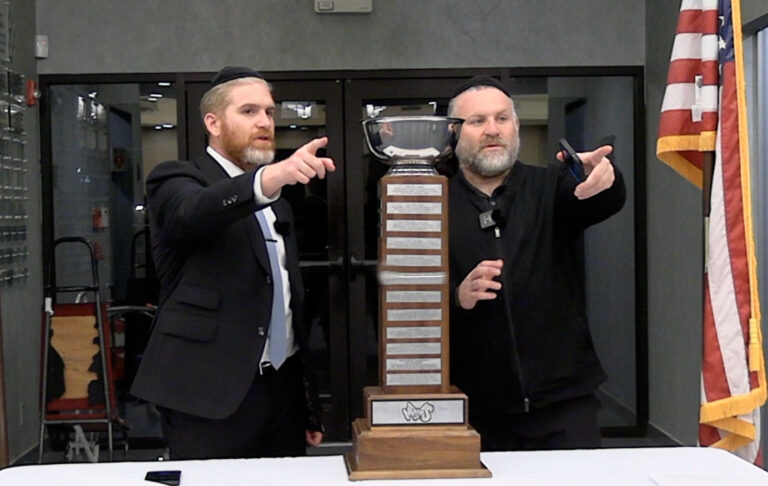DAVE GORDON
Yeshiva Bnei Shimon Yisrael and Talmud Torah of Kasho, both in Williamsburg, were informed by the New York State Education Department on February 11th (after allegedly ignoring final warnings issued in December)that the institutions did not meet state mandated curricula requirements. Therefore, they were slated to lose state subsidies for meals, transportation, textbooks, and other services.
The yeshivot were sent letters in both English and Yiddish from the Education Department stating that in addition to the lost funding, that parents were to enroll their children in other schools by July 1, as reported by Ynet and the New York Post.
“The yeshiva system provides a rigorous education, no less demanding than public schools,” community leaders responded in a statement.
The Education Department’s letter also stated that they reached out several times to the yeshivot and determined that each of the institutions were “no longer deemed a school, which provides compulsory education fulfilling the requirements of Article 65 of the Education Law.”
The following May, four other unnamed yeshivot were also facing the same situation, according to The Jewish Press.
These yeshivot were given a June 30 deadline, by which time they were required to show that they were offering curricula that was “substantially equivalent” to public schools, as required by state regulations adopted three years ago.
This marks the first time the New York State Education Department has taken such extreme action, ordering parents to find alternative educational arrangements for their children for the upcoming academic year.
According to the New York Post, that meant choosing a different religious school that meets legal requirements, homeschooling, or a public school.
Educational Standards
This past February, Ynet News reported that the issue initially arose as a result of a 2022 New York Times investigation, that claimed at least 18 publicly funded yeshivot failed to meet state educational standards.
Despite the controversy, Mayor Eric Adams said in response to the report, “Yeshivas provide a high-quality education that nurtures our children, and other schools should learn from them.”
Jewish News Syndicate (JNS) asked educational expert Moshe Krakowskito weigh in. He responded that these yeshivot were not falling short on the state’s expectations.
Krakowski is a professor at Yeshiva University’s Azrieli Graduate School of Jewish Education and Administration and is the Director of Doctoral Studies at Azrieli. He studies American haredi education and culture.
“There are many Chassidic schools that offer the basics of reading, writing, arithmetic, social studies, and civics through at least the seventh through eighth-grade level,” Krakowski told JNS, adding that they “spend most of their day in incredibly rigorous, high-level religious study – and it’s not like these kids are left truant.”
Politicians Get Involved
In an attempt to placate both sides, two local Jewish politicians have since become involved in the issue–City Councilman Simcha Felder and Assemblyman Simcha Eichenstein (District 48).
Their efforts appeared to have initiated an anonymously sponsored Assembly draft bill on March 11th, determined to revise the standards that religious schools must meet. As of press time, the draft bill has entered in the final stages of budget negotiations. Reportedly, it was tucked into a budget bill to ostensibly bypass the legislative process.
Simcha Felder issued a statement to Community Magazine saying that he was “pleased that the New York State budget includes a seven-year pause on the implementation of the State’s overreaching regulation of our nonpublic schools, including yeshivot.” He added that he remains “hopeful that the State’s willingness to reverse this policy permanently will continue to grow over time.”
Felder represented the 44th district on the New York City Council from 2002 to 2010, represented the 17th district in the New York State Senate from January 2013 to December 2022, and represented the 22nd district from January 2023 to April 2025. He won a special election for New York City Council in the 44th District in March.
Felder said that while he served in Senate, he “consistently made the case that New York’s diverse educational needs are not one-size-fits-all and that results, not timekeeping, are the only way to judge educational quality.”
He added that Senate Majority Leader Andrea Stewart-Cousins and Deputy Majority Leader Michael Gianaris paid close attention to the community’s concerns and “recognized the vital role these institutions play in providing quality education for our children.”
Advocacy Group and Four Brooklyn Yeshivot Take a Stand
Following the state’s letter to the yeshivas, the advocacy group Parents for Educational and Religious Liberty in Schools (PEARLS) filed a federal discrimination complaint, alleging that New York’s actions interfere with the autonomy of yeshivot and constitute discriminatory practices. PEARLS is comprised of families of students. educators, religious leaders, and community members mostly from Borough Park, Crown Heights, and Williamsburg. The U.S. Department of Education’s civil rights office has not yet announced an investigation into these complaints, and no official statement from the administration has addressed the specific case of yeshiva funding cuts.
In January, the Times of Israel reported that four yeshivot in Brooklyn, Bobover Yeshiva Bnei Zion, Oholei Torah, United Talmudical Academy, and Yeshiva & Mesivta Arugas Habosem,filed a complaint with the US Department of Education alleging “targeted and discriminatory treatment,” by New York State. “Only the federal government can ensure that the yeshivas can pursue their missions free from interference,” the yeshivot stated. The yeshivot believed their Jewish studies curriculum were not accepted by New York authorities, and in doing so violated federal Title VI civil protection, that gave parents the right to choose their child’s education.
Dov Hikind Weighs In
Meanwhile, Dov Hikind, former New York State assemblyman, took a nuanced approach to state expectations and how the yeshivot could handle future similar issues.
He said he “knows all of the players, the yeshivas of Brooklyn, the main leaders” as he was a Brooklyn-based New York State assemblyman from 1983 to 2018.
“I think while things have improved over the years, we still have a way to go,” he said. He believes there is, however, common ground to be found.
“I think everything in the world should be done to work things out in a reasonable way where funds are not withheld, and there are some serious improvements in certain areas, period,” Hikind told Community Magazine.
Hikind attributes the slow pace of change in part to educators growing accustomed to the status quo.
Common ground is “actually the answer” he said. “I don’t think the state is so dug in… I think there needs to be movement on both sides.”
Hikind concedes that there may be a possibility that there are bad actors in the political system that have a chip on their shoulder, and have ideological reasons for opposing the yeshivot.
“Are there are people in the state who have motivations that are not kosher that want to sort of stick it to some of these schools? I wouldn’t be shocked by that, but I would say that overall, I think the goal is that there are rules, and those are good things.”
He has only warm words for the Jewish religious institutions, moreover, that he said are doing well in developing young minds.
“I love all these yeshivas. They’re great… [the students are] getting educated in very many ways,” said Hikind.












